Why Peer Influence Affects SAT Prep Outcomes
Walk into any coffee shop near a high school the month before the SAT and you’ll find clusters of students with flashcards, shared laptops, and half-finished practice tests. What’s striking isn’t just the materials or the intensity — it’s how those students affect one another. Peer influence is subtle, powerful, and often underestimated. For a test like the SAT, where strategy, consistency, and mindset matter as much as raw knowledge, the people you study with can nudge your performance up or down in ways you might not realize.

A personal snapshot: the study-buddy effect
Think about your best study session. Maybe a friend explained a grammar rule so clearly it finally clicked. Or you felt accountable because someone else expected you to take a practice test by Sunday. Those moments aren’t accidental; they’re the fruit of social mechanisms at work. The presence of a supportive peer can increase motivation, reduce procrastination, and push you to practice more deliberately — all of which improve SAT outcomes.
How Peer Influence Works: The Psychology in Plain Words
Social learning and modeling
People learn by watching others. If your friend times every practice section, reviews errors thoroughly, and celebrates incremental progress, you’re more likely to adopt those habits. That’s social learning in action: behavior is contagious. When high-effort habits become visible in your circle, they become easier to copy.
Norms, expectations, and motivation
Groups create norms. If your study group meets three times a week and values disciplined practice, that becomes the unstated expectation. Norms reduce decision fatigue — instead of asking “Should I study?” you’re deciding “How will I study today?” That shift alone can increase total study time and the quality of practice.
Competition and stretch goals
A little competition can be energizing. Friendly rivalry — racing through a timed section or comparing scores after a practice test — pushes students to target weak spots. But it’s a balance: constructive competition inspires growth, while toxic competition increases anxiety and erodes confidence.
Positive Peer Influences: What They Look Like and Why They Help
- Accountability: Peers create gentle pressure to follow through on study plans and deadlines.
- Clarification: Explaining a concept to someone else deepens your own understanding, and hearing explanations in different words can unlock stubborn problems.
- Resource sharing: Smart shortcuts, useful drills, and vetted practice problems circulate quickly through study groups.
- Emotional support: Preparing for the SAT can be draining; empathetic peers diffuse stress and normalize setbacks.
- Benchmarking: Seeing peers’ strengths provides practical goals and realistic milestones.
These forces don’t guarantee higher scores, but they change the inputs that lead to improvement: more practice, better habits, and less test anxiety.
Negative Peer Influences: How Good Study Sessions Go Wrong
Common pitfalls
- Group drift: Sessions that start with math drills and devolve into social time — progress stalls.
- Misinformation: Wrong explanations propagate quickly if no one checks sources.
- Unhelpful norms: If your circle prizes cramming or shortcuts, you’ll adopt inefficient tactics.
- Comparative anxiety: Constant score comparisons can create the impression you’re falling behind, even if you’re improving steadily.
- Dependence: Relying on others to explain everything can undercut independent problem-solving skills needed on test day.
Quick Table: Types of Peer Influence and How to Respond
| Influence Type | Typical Effect on SAT Prep | Signs to Watch For | How to Respond |
|---|---|---|---|
| Positive modeling | Improved habits, more consistent practice | Peers consistently show up, prepare, and reflect | Adopt routines, ask for demonstrations, mirror best practices |
| Accountability | Higher practice frequency, deadline adherence | Shared goals, check-ins, scheduled mock tests | Use shared calendars and brief debriefs after practice tests |
| Competitive pressure | Can boost intensity or cause anxiety | Frequent comparing of scores, tension | Frame competition as personal bests and support, not ranking |
| Misinformation | Wasted study time, solidifying wrong methods | Conflicting explanations, no checking of official sources | Cross-check with official materials, ask a tutor or teacher |
| Distraction | Reduced effective study time | Frequent breaks turning into long chats, social media interruptions | Set a clear agenda and use focused blocks like Pomodoro |
Real-World Scenarios: Concrete Examples
Scenario 1: The High-Intent Pair
Two students, Ana and Marcus, meet twice a week. They time sections, trade hard problems, and quiz each other on vocabulary. Ana explains a reading passage strategy in a way Marcus hadn’t seen, and Marcus teaches test-taking pacing. Both improve because they each bring complementary strengths and a shared commitment.
Scenario 2: The Distracted Group
A group of four means well — but their sessions become social. Half the time’s spent catching up, and when they do work, they don’t follow through on the agreed drills. After a month, everyone feels busy but no one’s score improves. The problem isn’t their intentions; it’s the structure and norms they failed to set.
Scenario 3: The Misinformation Spiral
Someone in the group claims a shortcut for certain problem types. Without verification, the method spreads. Students practice it, internalize it, and get surprised when an official practice test punishes the shortcut. This is why cross-checking with credible materials or an expert makes a huge difference.
How to Build a Peer Environment That Helps Your SAT Score
Choose partners intentionally
It’s tempting to join the friendliest group, but consider compatibility: similar dedication, complementary skills, and mutual respect for time. A well-matched pair or trio often beats a larger, inconsistent group.
Set a simple agenda for each session
- 15–20 minute warm-up (review flashcards or mistakes)
- 30–50 minute focused practice block (timed section or drill)
- 15–30 minute review and error analysis
- 5–10 minute plan for the next meeting
Clear structure keeps momentum and turns social energy into productive outcomes.
Use roles and rotate them
Assign roles like “timer,” “explainer,” and “recorder” to make sessions efficient. Rotating roles ensures everyone practices both independent skills and collaborative ones.
Make accountability concrete
Shared calendars, short post-session messages, or a quick progress spreadsheet keeps group members honest. Instead of vague goals like “study more,” set specific actions: complete one official practice test each weekend, review all incorrect answers within 48 hours, or master a particular question type each week.
Verify knowledge and cross-check resources
Encourage a habit of verifying strategies against official SAT materials or an experienced teacher/tutor. That’s where resources like Sparkl’s personalized tutoring can fit in naturally: when a group encounters conflicting explanations, Sparkl’s 1-on-1 guidance, expert tutors, and AI-driven insights can help resolve confusion quickly, ensuring the group moves forward based on accurate methods.
Balancing Peer Study with Solo Practice
The best strategy usually mixes group and solo work. Peer study amplifies motivation and offers explanation, but the solo component builds endurance, independence, and the ability to perform under test conditions.
A hybrid weekly plan (example)
- Monday: Solo — timed math section + error log
- Wednesday: Group — review errors, drill weak question types
- Friday: Solo — reading comprehension practice, timing focus
- Weekend: Full-length practice test (simulate test-day conditions)
This kind of rhythm gives you the motivation of peers and the focused refinement of independent practice.
When to Bring in Expert Help
Peer groups cover a lot of ground, but they aren’t a complete substitute for targeted instruction. If a concept resists explanation, or if your group consistently disagrees on strategy, a short session with a skilled tutor can provide clarity. Sparkl’s personalized tutoring offers options like tailored study plans, expert tutors who identify weak patterns, and AI-driven insights that highlight the most efficient next steps — helping your group (or you individually) turn confusion into progress.
Signals you need an expert
- Persistent low scores on the same question types despite repeated practice
- Frequent disagreements about the right approach to a problem
- High anxiety that affects practice quality
- Limited time and a need for a highly efficient plan
Practical Tools and Prompts for Better Peer Sessions
- Start every meeting with a quick “goal check”: what will each person finish by the end?
- Keep an error log and rotate who summarizes key takeaways each week
- Use time blocks and a visible timer to protect focus
- End sessions with a 5-minute reflection: what worked, what didn’t, and one action for next time
- Periodically invite an outside perspective — a teacher, a tutor, or a Sparkl coach — to audit your process and recommend adjustments
Measuring Progress: Smart Metrics Your Group Should Track
Not all progress shows up on the practice test number. Track process metrics too:
- Number of timed sections completed per week
- Accuracy on repeated question types after targeted practice
- Time spent on error analysis versus mere problem repetition
- Self-reported confidence on timing and specific sections
These metrics reveal whether peer influence is producing sustainable skill growth or just temporary boosts.
Final Thoughts: Make Your Study Circle Work for You
Peers are not destiny, but they are one of the most influential levers you can pull while preparing for the SAT. A thoughtful study circle can accelerate your learning, keep you accountable, and make the journey less lonely. But groups can also spread bad habits, create pressure that hinders performance, or waste time if not structured properly.
So be intentional. Choose study partners who lift your standards, set simple yet firm norms for every session, and blend group work with solo practice. When uncertainty or stagnation appears, don’t hesitate to bring in targeted expert help — whether a teacher, an experienced tutor, or Sparkl’s personalized tutoring options that offer 1-on-1 guidance, tailored study plans, expert tutors, and AI-driven insights to make your study time more effective.
Above all, remember: the SAT is a test of what you can do on a particular day, but it’s also the predictable result of consistent, well-structured preparation. The social world around you can be a powerful engine for that preparation — if you steer it with purpose.
Quick checklist before your next session
- Do we have a clear agenda and time blocks?
- Does each person have a defined role?
- Are we verifying strategies against reliable sources?
- Do we schedule solo practice and a weekend full-length test?
- Will we review our progress and make tiny plan adjustments next time?
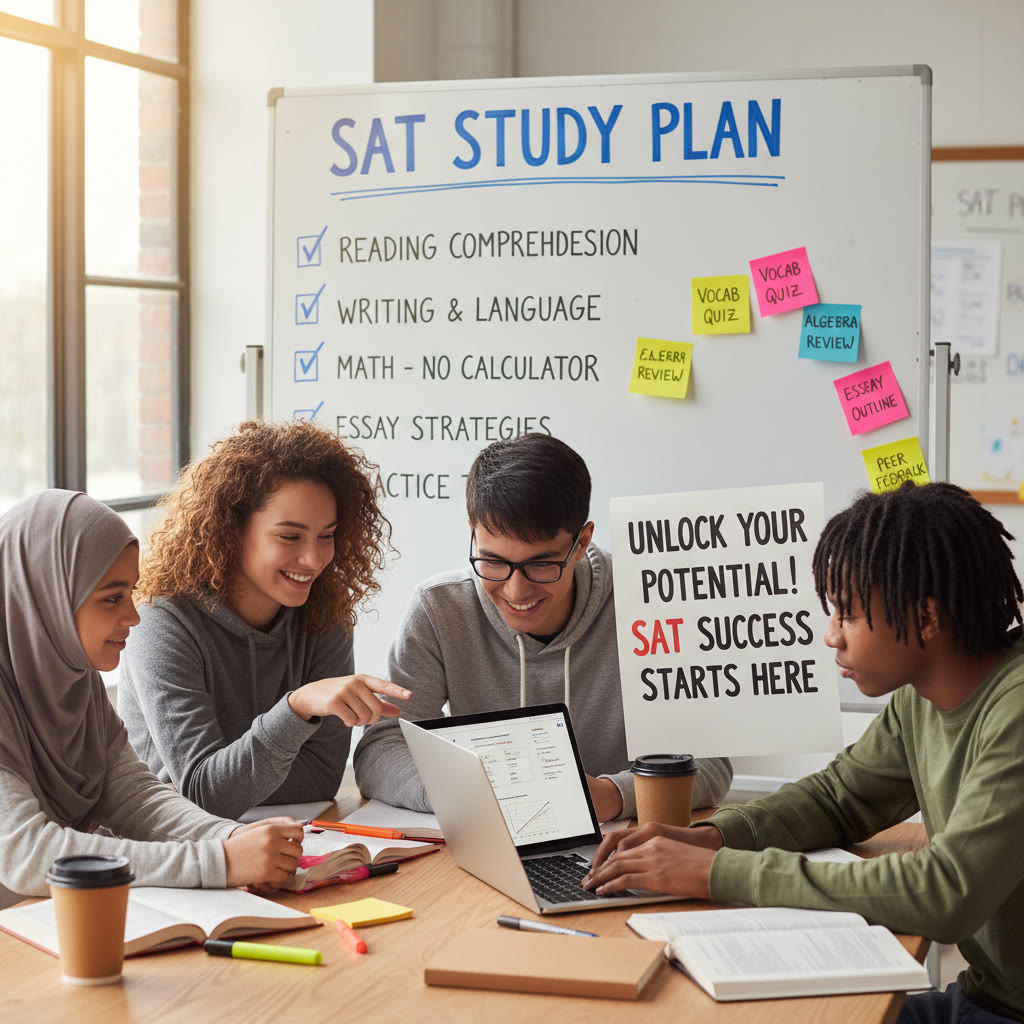
Parting encouragement
Study circles are social engines of improvement. With the right mix of accountability, structure, and expert input when needed, your peers can help turn steady effort into measurable score gains. Keep what works, fix what doesn’t, and treat your peer group as a tool you shape — not a fixed fate. With intention and a little strategy, your social surroundings will become one of your greatest SAT advantages.



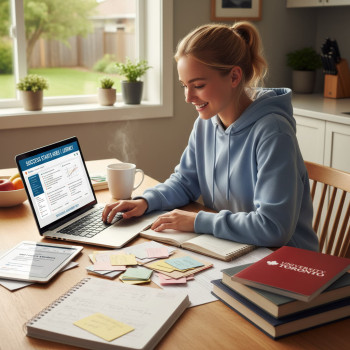
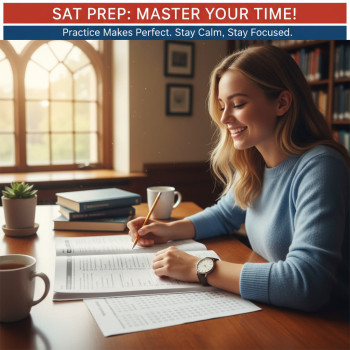
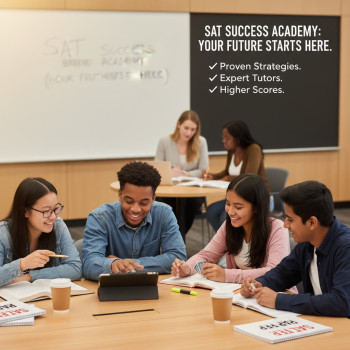
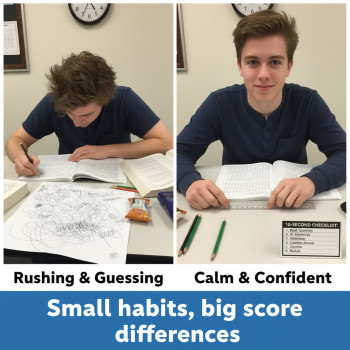
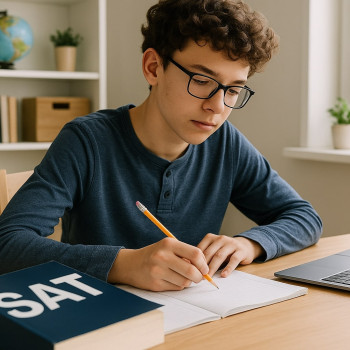









No Comments
Leave a comment Cancel